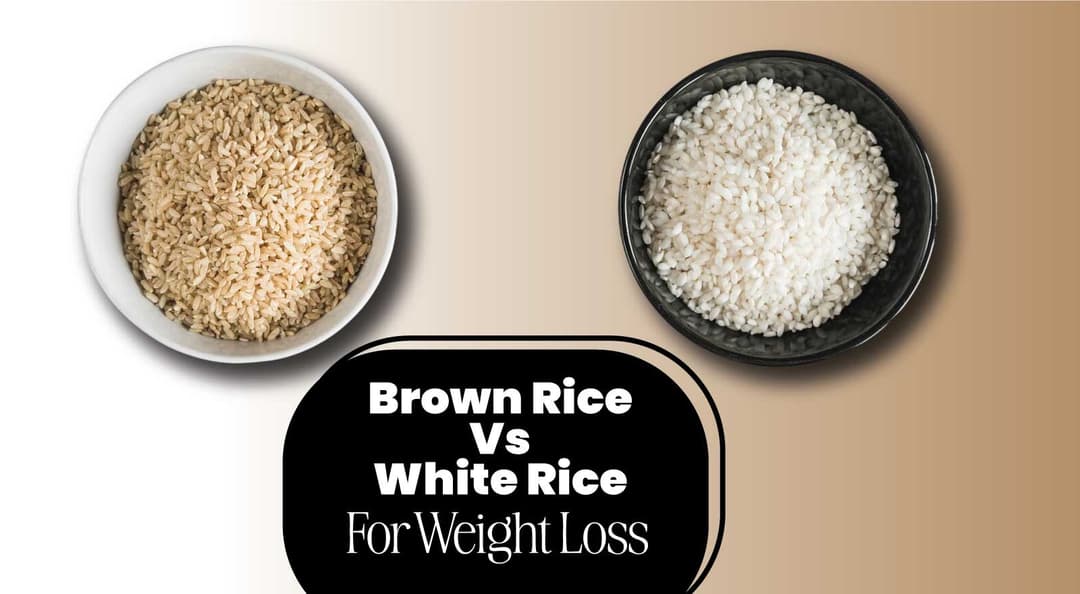Did you know that you can burn more calories just by eating certain foods? Well, it may sound strange and foolish, but it's true! We all struggle to lose weight and have tried different diets and fitness programs, but you would be pleased to know that eating can also help us lose weight. These foods are known as "Thermogenic foods" that specifically help in boosting the body's metabolism and burn more calories.
These thermogenic foods take more time to digest, absorb and transport the nutrients properly, thus keeping you feeling full and satisfied. These foods are good options if you want to lose weight in a healthy way. This blog explains the thermic effect of food to help you achieve your desired weight faster. So, read the list of foods with the highest thermic effect!
Table Of Contents
- What Is The Thermic Effect Of Food?
- What Food Has The Highest Thermic Effect?
- Do Spicy Foods Have A High Thermic Effect?
- What Foods Take The Most Energy To Digest?
- Dietitian's Recommendations
- The Final Say
- FAQs
- References
What Is The Thermic Effect Of Food?
The thermogenic effect of food is the amount of energy required to break down and utilise the nutrients in the food you eat. This process also leads to an increase in metabolic rate, which is the rate at which the body burns calories. When you consume food, your body uses up calories to digest, absorb, and store the nutrients, increasing the rate at which your body burns calories. The thermic effect of food accounts for about 10% of daily energy expenditure, but this figure increases with higher protein intake. Resting metabolic rate (RMR) refers to the amount of energy the body uses when resting. TEF is relevant to this indicator because it represents the increase in RMR after food intake.
The amount of calories a person actually takes in from food varies depending on factors such as their metabolism, the timing of meals, and the macronutrient composition (carbohydrates, fat, and protein) of the food they consume. The energy required to digest each macronutrient is known as the Thermic Effect of Food (TEF) and can be expressed as a percentage of the energy provided by the macronutrient.
- Fat provides 9 calories per gram and has a TEF of 0-3%,
- Carbohydrates provide 4 calories per gram and have a TEF of 5-10%
- Protein provides 4 calories per gram and has a TEF of 20-30%.
What Food Has The Highest Thermic Effect?

The list of foods that have thermogenic effects is:
1. Protein-Rich Foods
These are among the best foods with a high thermodynamic effect. Eating high-protein foods like lean meat and eggs can help you increase your metabolic rate and burn more calories. Proteins are also very satiating, thus preventing long-term cravings; they also help stabilise blood sugar levels between meals. So, if you want to increase your metabolism and boost calorie burning, add more protein to your diet.
2. Low-Fat Dairy Products
Studies show that low-fat dairy products are another great option for maintaining a healthy body weight. You can replace high-fat foods with low-fat Greek yoghurt or cottage cheese if you want to eat less. However, it is essential to have foods that do not contain sweeteners. For example, Greek yoghurt cups with fruit on the bottom tend to be higher in carbohydrates due to added sugars. So, choose wisely while looking for low-fat food options.
3. Green Tea
Having a cup of green tea daily boosts your metabolism. It contains antioxidants like catechins that boost the activity of norepinephrine, a hormone that helps break down fat and use it for energy. Moreover, the caffeine content is also known to increase metabolism and burn fat.
4. Fish
Fatty fish like salmon, tuna, and mackerel are enriched in polyunsaturated fatty acids (PUFA) and omega-3 fatty acids, which help reduce inflammation. They not only help lower bad cholesterol levels (LDL) but also reduce the risk of heart disease and stroke.
It was also observed that people who regularly consume fish oil have been shown to have higher liver mitochondrial glycerophosphate dehydrogenase activity levels, an enzyme involved in thermogenesis.
5. Nuts And Seeds
These are packed with essential vitamins, nutrients, and soluble fibre that help regulate metabolism and keep you full. Although nuts and seeds are high in calories, flaxseeds and Brazil nuts are your best options.
Flaxseeds can improve the gut microbiome and boost energy expenditure, while Brazil nuts are rich in selenium, which helps regulate thyroid function and metabolism.
6. Avocado
Avocados are another high-fat food; half an avocado contains about 16 grams of fat. But one thing that makes avocados a high-calorie food is their high magnesium content. Magnesium is essential for absorbing nutrients and helps regulate digestion and blood sugar levels. It also activates enzymes that synthesise adenosine triphosphate (ATP), which provides energy to the body's cells. Avocado consumption has also been linked to a reduced risk of metabolic syndrome.
7. Dark Chocolate
It is also rich in catechins like green tea and contains monounsaturated fat (MUFA), fibre, and minerals such as magnesium, iron, and zinc. Studies have shown that gut microbes in the stomach ferment dark chocolate and stimulate the production of polyphenol compounds, such as butyrate, which can increase thermogenesis in obese mice. However, it's important to choose dark chocolate that is not overly processed and contains at least 70% cocoa content instead of bingeing on candies that claim to contain dark chocolate.
8. Coffee
It contains compounds called chlorogenic acids, which help regulate glucose levels. Additionally, the caffeine in coffee helps break down fat in the body by stimulating the sympathetic nervous system and promoting fat breakdown. Coffee also suppresses your appetite. You still need to consume enough calories to maintain your activity level, but drinking coffee when you're hungry can help prevent overeating.
9. Peppers
Not all researchers agree that chilli peppers speed up your metabolism, but some studies suggest that chilli peppers may help you burn an extra 50 calories per day. This is due to capsaicin, a compound that gives peppers their heat. Capsaicin may also play a role in fat oxidation and appetite suppression.
Jalapeno, serrano, cayenne, and Thai chilli peppers are some of the most common peppers that contain capsaicin. It doesn't require much to get it to work. Just 9-10 mg of capsaicin is enough to speed up your metabolic rate. Almost one jalapeño a day. If you don't like spicy food, you can also take commercially available capsaicin supplements.
10. Beans And Legumes
Legumes such as lentils, peanuts, black beans, chickpeas, and peas are excellent plant-based protein sources. They are also high in fibre, which reduces insulin spikes and keeps blood sugar levels stable throughout the day. The fibre in beans and legumes slows digestion and promotes beneficial prebiotic effects in the colon.
11. Whole Grains
Complex carbohydrates like oats, brown rice, and quinoa require more digestion energy than simple carbohydrates like white bread or pasta. Complex carbohydrate sources contain more fibre than less nutritious carbohydrates. Plenty of dietary fibre can help prevent significant blood sugar increase after a meal. It may also improve insulin sensitivity, help with weight loss or maintenance, and positively affect the gut microbiome.
Do Spicy Foods Have A High Thermic Effect?
The use of spices in our food has been steadily increasing, and there is little information about their effects on metabolic rate over time. It is estimated that about 40 different spices are used in our diet today. Spicy foods like chilli peppers and cayenne peppers contain capsaicin, which helps increase metabolic rate and burn more calories.
If you have ever had one, you will quickly realise that it helps you burn more calories by raising your body temperature and causing you to sweat. They showed that it can increase energy expenditure, increase fat oxidation (reduce RQ) and reduce appetite. However, the effects are usually small and short-lived.
Eating too many spicy foods can cause indigestion, so eating them in moderation is best.
What Foods Take The Most Energy To Digest?
The average person spends about 10% of their daily energy digesting and assimilating food, but this percentage varies depending on the food eaten. Protein has the highest thermogenic effect and can increase metabolic rate by 15-30%. Carbohydrates increase metabolic rate by 5-10%, while fat increases metabolic rate by only 0-3%.
Protein requires the most energy to digest (20-30% of total calories consumed are used for digestion). Protein has the strongest thermogenic effect, burning about 20-30% of calories during digestion, making it one of the best macros if you're looking to lose weight (and maintain muscle mass).
Dietitian's Recommendations
The thermic effect is important in our body's metabolism and energy expenditure. Eating foods with a high thermogenic effect can help you burn more calories and increase your overall energy expenditure. Including foods like lean proteins, whole grains, fibrous fruits, and vegetables can increase thermogenic benefits and support your weight loss or fat loss goals. None of these foods will help you lose weight or fat.
The Final Say
Well, the thermic effect of food can help you healthily lose weight. Adding the food mentioned above to your regular diet plan can help you achieve your target weight. Plus, engaging in regular physical activity and taking adequate rest is equally important for weight management. If you need more information on weight loss and fitness plans with personal guidance, you can visit TonepOp Fit!
FAQs
1. Is Coffee a Thermic food?
Yes, coffee is listed as a thermogenic food. This is because it contains chlorogenic acids that regulate the glucose level, thus helping the body to break down the fat in the body.
2. Do all foods have a thermogenic effect?
Well, it's not so, as the thermogenic effect depends on the concentration of the macronutrient. Food containing more protein shows the highest thermogenic effect, followed by carbohydrates and fats.
3. Can the thermic effect of food vary from person to person?
Yes, the thermic effect of foods does vary from person to person. It also depends on factors such as age, gender, body composition, and the person's genetics. Not only this, but it also varies with medical conditions.
4. What are the top 5 high thermic foods?
foods with high thermic effect are:
- Green Tea
- Coffee
- Ginger
- Lentils
- Whole Grains
5. What are the factors affecting the thermic effect of food?
Factors affecting the thermal effect of food include:
- Age
- The macronutrient content of the food
- Physical activity
References
- https://pubmed.ncbi.nlm.nih.gov/3957721/
- https://pubmed.ncbi.nlm.nih.gov/31021710/
- https://wellness.totalaccessmedical.com/blog/what-is-the-thermic-effect-of-food?hs_amp=true
- https://www.revolution-pts.com/blog/understanding-the-thermic-effect-of-food
- https://www.fittr.com/article/what-foods-types-can-burn-more-energy-55/
About ToneOp Fit
ToneOp Fit is a platform dedicated to improving and maintaining good health through a comprehensive range of goal-oriented health plans with up to 3 Coach support. With a range of Weight Management, Medical Condition, Detox Plans, and Face Yoga Plans, the app also provides premium health trackers, recipes and health content. Get customised diet, fitness, naturopathy & yoga plans and transform yourself with ToneOp.









































